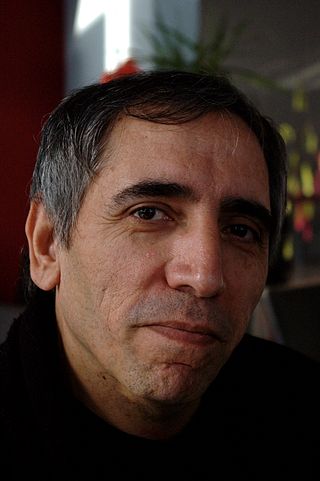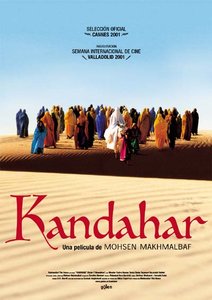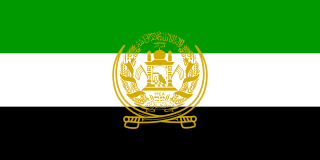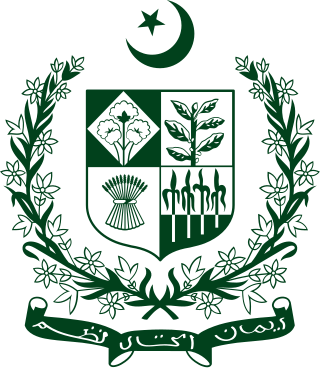Related Research Articles

Afghanistan, officially the Islamic Emirate of Afghanistan, is a landlocked country located at the crossroads of Central Asia and South Asia. It is bordered by Pakistan to the east and south, Iran to the west, Turkmenistan to the northwest, Uzbekistan to the north, Tajikistan to the northeast, and China to the northeast and east. Occupying 652,864 square kilometers (252,072 sq mi) of land, the country is predominantly mountainous with plains in the north and the southwest, which are separated by the Hindu Kush mountain range. Kabul is the country's capital and largest city. According to the World Population review, as of 2023, Afghanistan's population is 43 million. The National Statistics Information Authority of Afghanistan estimated the population to be 32.9 million as of 2020.

The Soviet–Afghan War took place in the Democratic Republic of Afghanistan from December 1979 to February 1989. Marking the beginning of the protracted Afghan conflict, it saw the Soviet Union and the Afghan military fight against the rebelling Afghan mujahideen. While they were backed by various countries and organizations, the majority of the mujahideen's support came from Pakistan, the United States, the United Kingdom, China, Iran, and the Arab states of the Persian Gulf, in addition to a large influx of foreign fighters known as the Afghan Arabs. American and British involvement on the side of the mujahideen escalated the Cold War, ending a short period of relaxed Soviet Union–United States relations. Combat took place throughout the 1980s, mostly in the Afghan countryside, as most of the country's cities remained under Soviet control. The conflict resulted in the deaths of approximately 3,000,000 Afghans, while millions more fled from the country as refugees; most externally displaced Afghans sought refuge in Pakistan and in Iran. Approximately 7.4% to 22.2% of Afghanistan's erstwhile population of 13.5 million people is estimated to have been killed over the course of the Soviet–Afghan War. The decade-long confrontation between the mujahideen and the Soviet and Afghan militaries inflicted grave destruction throughout Afghanistan and has also been cited by scholars as a significant factor that contributed to the dissolution of the Soviet Union in 1991; it is for this reason that the conflict is sometimes referred to as "the Soviet Union's Vietnam" in retrospective analyses.
In the 20th century, approximately 900,000 Jews migrated, fled, or were expelled from Muslim-majority countries throughout Africa and Asia, primarily as a consequence of the establishment of the State of Israel. Large-scale migrations were also organized, sponsored, and facilitated by Zionist organizations such as Mossad LeAliyah Bet, the Jewish Agency, and the Hebrew Immigrant Aid Society. The mass movement mainly transpired from 1948 to the early 1970s, with one final exodus of Iranian Jews occurring shortly after the Islamic Revolution in 1979–1980. An estimated 650,000 (72%) of these Jews resettled in Israel.

This is a timeline of Afghan history, comprising important legal and territorial changes and political events in Afghanistan and its predecessor states. To read about the background to these events, see History of Afghanistan. See also the list of heads of state of Afghanistan and the list of years in Afghanistan.
The following lists events that happened during 2001 in Afghanistan.

Mohsen Makhmalbaf is an Iranian film director, writer, film editor, and producer. He has made more than 20 feature films, won 50 awards, and served as a juror in more than 15 major film festivals. His award-winning films include Close-Up (1990) and Kandahar. His latest documentary is The Gardener and latest feature The President.

Kandahar is a 2001 Iranian film directed by Mohsen Makhmalbaf, set in Afghanistan during the rule of the Taliban. Its original Afghan title is Safar-e Ghandehar, which means "Journey to Kandahar", and it is alternatively known as The Sun Behind the Moon. The film is based on a partly true, partly fictionalized story of Nafas, a successful Afghan-Canadian woman played by Nelofer Pazira.

The Northern Alliance, officially known as the United Islamic National Front for the Salvation of Afghanistan, was a military alliance of groups that operated between early 1992 and 2001 following the dissolution of the Soviet Union. At that time, many non-Pashtun Northerners originally with the Republic of Afghanistan led by Mohammad Najibullah became disaffected with Pashtun Khalqist Afghan Army officers holding control over non-Pashtun militias in the North. Defectors such as Rashid Dostum and Abdul Momim allied with Ahmad Shah Massoud and Ali Mazari forming the Northern Alliance. The alliance's capture of Mazar-i-Sharif and more importantly the supplies kept there crippled the Afghan military and began the end of Najibullah's government. Following the collapse of Najibullah's government the Alliance would fall with a Second Civil War breaking out however following the Islamic Emirate of Afghanistan's (Taliban) takeover of Kabul, The United Front was reassembled.

In This World is a 2002 British docudrama directed by Michael Winterbottom. The film follows two young Afghan refugees, Jamal Udin Torabi and Enayatullah, as they leave a refugee camp in Pakistan for a better life in London. Since their journey is illegal, it is fraught with danger, and they must use back-channels, bribes, and smugglers to achieve their goal.

Afghan refugees are citizens of Afghanistan who were forced to flee from their country as a result the continuous wars that the country has suffered since the Afghan-Soviet war, the Afghan civil war, the Afghanistan war (2001–2021) or either political or religious persecution. The 1978 Saur Revolution, followed by the 1979 Soviet invasion, marked the first major wave of internal displacement and international migration to neighboring Iran and Pakistan; smaller numbers also went to India or to countries of the former Soviet Union. Between 1979 and 1992, more than 20% of Afghanistan's population fled the country as refugees. Following the Soviet withdrawal in 1989, many returned to Afghanistan, however many Afghans were again forced to flee during the civil war in the 90s. Over 6 million Afghan refugees were residing in Iran and Pakistan by 2000. Most refugees returned to Afghanistan following the 2001 United States invasion and overthrow of the Taliban regime. Between 2002 and 2012, 5.7 million refugees returned to Afghanistan, increasing the country's population by 25%.

The 1996–2001 Afghan Civil War, also known as the Third Afghan Civil War, took place between the Taliban's conquest of Kabul and their establishing of the Islamic Emirate of Afghanistan on 27 September 1996, and the US and UK invasion of Afghanistan on 7 October 2001: a period that was part of the Afghan Civil War that had started in 1989, and also part of the war in Afghanistan that had started in 1978.
The Soviet–Afghan War had an important impact in popular culture in the West, due to its scope, and the great number of countries involved. The Russian-Ukrainian film The 9th Company, for example, became a blockbuster in the former USSR earning millions of dollars and also representing a new trend in Russia in which some domestic films are "drawing Russian audiences away from Hollywood staples." The use of the war in Russian cinema has attracted scholarly attention as well. Some of this attention focuses on comparisons of the conflict with other modern wars in Vietnam and Iraq. Other work focuses on the war and fictional accounts of it in the context of Soviet military culture. Even when not directly portrayed, service in the war is sometimes used as a backstory for Russian characters to explain their combat prowess, such as in the manga and anime series Black Lagoon.

There is a large population of Iraqis in Iran, including Iranian citizens of Iraqi descent and Iraqi citizens of Iranian descent. According to the 2001 Iran census, there were roughly 203,000 Iraqis living in Iran; a UNHCR report counts 204,000 Iraqis living in Iran. The actual figure is likely to be much higher than this, perhaps exceeding 500,000, as many Iraqis gained Iranian citizenship while in Iran. In recent years, many have returned to Iraq following the fall of the Saddam Hussein regime.
Barefoot to Herat is a 2002 Iranian film by Majid Majidi. It is a documentary about the plight of Afghan refugees just after the 2001 military offensive against the Taliban.
Tajiks in Pakistan are residents of Pakistan who are of Tajik ancestry. The Tajiks are a Persian-speaking Iranian ethnic group native to Central Asia, living primarily in Afghanistan, Tajikistan, and Uzbekistan.

Immigration to Pakistan is the legal entry and settlement of foreign nationals in Pakistan. Immigration policy is overseen by the Interior Minister of Pakistan through the Directorate General Passports. Most immigrants are not eligible for citizenship or permanent residency, unless they are married to a Pakistani citizen or a Commonwealth citizen who has invested a minimum of PKR 5 million in the local economy.
Afghans in Iran are citizens of Afghanistan who are temporarily residing in Iran as refugees or asylum seekers. They form the largest percent of the Afghan diaspora. The first wave of Afghans crossed into Iran after the start of the Soviet–Afghan War in 1979.
United Nations Security Council resolution 1193, adopted unanimously on 28 August 1998, after recalling Resolution 1076 (1996) concerning Afghanistan, the Council discussed the deteriorating political, military and humanitarian situation in Afghanistan during the ongoing civil war in the country.

United Nations Security Council resolution 1214, adopted unanimously on 8 December 1998, after recalling resolutions 1189 (1998) and 1193 (1998) concerning Afghanistan, the Council discussed the deteriorating political, military and humanitarian situation in Afghanistan and established a civil affairs unit as part of the United Nations Special Mission to Afghanistan (UNSMA).
The Torbat-e Jamcamp, also called Mehmanshahr, is an Afghan refugee camp in eastern Iran, Torbat-e Jam established around 1998, with a capacity of 10,000 people. The camp, as of 2016, housed 4,000 Afghan refugees on a 100-hectare compound of permanent brick housing, schools and clinics, and a mosque.
References
- 1 2 Z magazine, Volume 14. Institute for Social and Cultural Communications, 2001
- ↑ World Refugee Survey 1998. U.S. Committee for Refugees, 1998
- ↑ Mario Falsetto, Liza Béar. The Making of Alternative Cinema: Beyond the frame : dialogues with world filmmakers. Praeger, 2008. ISBN 0-275-99941-6, ISBN 978-0-275-99941-4. Pg 227